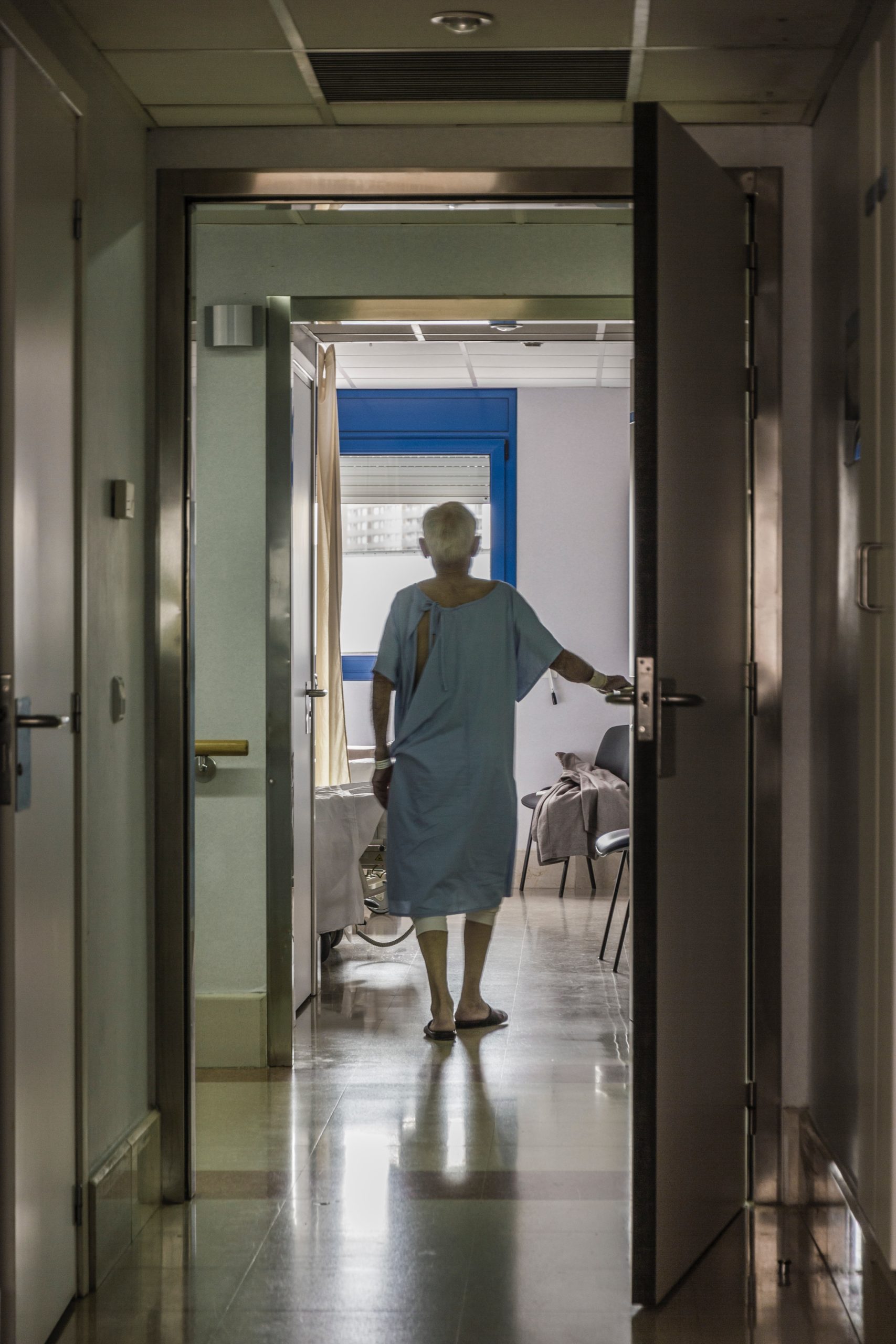
Use of the Palliative Performance Scale (PPS)
This article has been medically reviewed by Dr. Martin Duggan in 2021.
This content is not intended to be a substitute for professional medical advice, diagnosis, or treatment. Always seek the advice of your physician or another qualified health provider with any questions you may have regarding a medical condition.
If you have a loved one suffering from a terminal disease or chronic condition, having accurate prognostic information about disease progression is important. The Palliative Performance Scale (PPS) is widely used to assess functioning and disease progression in elderly patients and adults with chronic conditions. The PPS is used by caregivers in hospice settings, hospitals, nursing homes, and in-home care settings. Your loved one’s physicians and caregivers are likely to use the PPS, so it is good to know a few things about it.
What is palliative care?
Palliative care is care that aims to make a patient comfortable, but does not cure the underlying disease; however, palliative care can be used in conjunction with treatment.
Palliative care is not only used with terminal patients; it is used intermittently for patients who have chronic pain and illness. Palliative care may include treatment for pain, adjusting one’s diet, occupational and/or physical therapy, or respiratory therapy. Palliative care might also involve treatment of mental health issues such as anxiety by a social worker or psychiatrist. Chaplains may be enlisted to support a patient’s spiritual needs. The PPS is widely used in palliative and hospice care, the latter of which is generally limited to patients who are expected to live no more than 6 months.
What is the Palliative Performance Scale (PPS)?
The PPS is a widely used tool to access a patient’s functional performance and to determine progress towards the end of life. The PPS was developed as a modification of the Karnofsky Performance Scale (KPS) in 1996 by Dr. Michael Downing and others in British Columbia, Canada who were part of the Victoria Hospice Society. The KPS is still widely used for measuring progression toward death, but is more often used with cancer patients who are in the hospital. According to Downing, “we endeavored to support death at home” and the KPS scoring “did not fit many of our patients who were able to die at home.”
The PPS is a valuable tool used in the clinical assessment of all palliative care patients, not just end of life patients. Studies have found the PPS to be both valid and reliable; that is, it accurately predicts progression toward end of life and is interpreted and used consistently. The PPS has been shown to be a significant predictor of survival in over 60 studies. It is used in many countries and has been translated into over 17 languages. Version 2 of the PPS is now the official PPS.
The PPS-2 is presented below. Notice the progressive decrease in activity and self-care a patient is engaged in as he moves closer to end of life. At a PPS level of between 80% and 100% a patient is considered stable, but when they fall below 80%, hospice care may be considered.
| PPS Level | Ambulation | Activity and Evidence of Disease | Self-Care | Intake | Conscious Level |
|---|---|---|---|---|---|
| 100% | Full | Normal Activity & Work No Evidence of Disease | Full | Normal | Full |
| 90% | Full | Normal Activity & Work Some Evidence of Disease | Full | Normal | Full |
| 80% | Full | Normal Activity With Effort Some Evidence of Disease | Full | Normal or Reduced | Full |
| 70% | Reduced | Unable Normal Job/Work Significant Disease | Full | Normal or Reduced | Full |
| 60% | Reduced | Unable Hobby/House Work Significant Disease | Occasional Assistance Needed | Normal or Reduced | Full or Confusion |
| 50% | Mainly Sit/Lie | Unable to do Any Work Extensive Disease | Considerable Assistance Needed | Normal or Reduced | Full or Confusion |
| 40% | Mainly in Bed | Unable to do Most Activities Extensive Disease | Mainly Assistance | Normal or Reduced | Full or Drowsy +/- Confusion |
| 30% | Totally Bed Bound | Unable to do Any Activities Extensive Disease | Total Care | Normal or Reduced | Full or Drowsy +/- Confusion |
| 20% | Totally Bed Bound | Unable to do Any Activities Extensive Disease | Total Care | Minimal to Sips | Full or Drowsy +/- Confusion |
| 10% | Totally Bed Bound | Unable to do Any Activities Extensive Disease | Total Care | Mouth Care Only | Full or Coma +/- Confusion |
| 0% | Death | – | – | – | – |
How to use/read the PPS
The PPS is used by palliative caregivers such as physicians, nurses, dietitians, physical and occupational therapists, respiratory therapists, social workers, and pastoral workers. Training for scoring the PPS is necessary in that it requires clinical judgement. Knowing the difference between definitions of terms such as “significant” and “extensive” is important for accuracy.
The PPS is used in assessing progression towards the end of life in both cancer and non-cancer illnesses such as lung, heart disease, renal failure, Parkinson’s, and Cerebrovascular disease. Although it can be applied to advanced stages of Alzheimer’s disease, other tools such as MODA or FAST are better for assessing cognitive performance related to dementia.
When looking at the PPS you will see there are 5 areas of observation across the top of the chart. They are degree of (1) Ambulation, (2) Ability to do activity/evidence of disease, (3) Ability to do self-care, (4) Intake of food and fluid, and (5) Level of consciousness. You will see 11 levels on the left-hand side for each of those areas. Scroll down until the correct “best fit” level for the patient is found. Dr. Downing stresses that the PPS is always based on what the patient is “capable of doing.” The levels are measured in 10% stages. For example, 100% would indicate full ambulation, normal activity, no evidence of disease, full self-care, normal food/fluid intake, and full level of consciousness. Deterioration in score falls by 10% increments until 0%, which is death. Leftward columns are stronger determinants and take precedence over others when assigning the final PPS % score to the patient.
You will notice that in the first category “Ambulation,” reduced ambulation begins at the 70% level and deteriorates to “totally bed bound” at the 30% level. Disease levels progress from “some” to “significant” to “extensive.” An example of extensive spread would be as in the spread of cancer. The extent of disease is also judged in the patient’s ability to do work, hobbies, and activity. For example, a patient that is still able to go for a walk, but at a reduced distance would put them at a 70% level. Unable to do any activity would put them at the 30% level. A patient needing occasional help with self-care such as washing puts them at the 60% level. The level drops with the patient needing “considerable assistance” to “mainly assistance.” “Total care” at the 30% level means the patient is unable to eat, toilet, or groom without help. An observation of reduced food/fluid intake by the patient begins at the 80% level. At the “minimal level” of 20% they may need a pureed diet. In the final category of consciousness, a patient that is starting to show signs of confusion would place them at the 60% level. “Drowsiness” may be due to fatigue, drug side-effects, closeness to death. The last conscious level is “coma” or the absence of response to verbal or physical stimuli.
PPS and hospice eligibility
The PPS can inform decisions about a patient’s hospice eligibility. A decline in score on the PPS can make one eligible for hospice. According to the Visiting Nurse Service of New York, patients with a PPS score of less than 70% may be appropriate for hospice care. That is because research shows a PPS score below 70% “survival for greater than six months is unlikely.” PPS can inform hospice on care planning such as interventions for pain management, psychosocial and spiritual symptoms, enhancing the patient’s overall comfort, and quality of life.
Why do we use PPS?
The PPS has been found useful for purposes of identifying and tracking potential changes to care needs of palliative care patients as disease progresses. The PPS provides a framework for measuring decline. It helps predict length of survival for the patient. It serves as a communication tool between medical team members for discussing patients’ conditions. PPS can assist family members in making difficult end of life decisions. PPS is helpful in decision in placement of patients (for example from active care to palliative care). It can also act as a workload measurement tool for resource allocation. For instance, a patient who scores less than 40% will require more hands-on nursing care. It is also used to guide the appropriate Palliative Collaborative Care Plan (stable to transitional to end of life). Finally, PPS is also used as a qualifier for admission into drug programs.
Use of PPS in long term care facilities
The PPS is widely used to assess functioning and disease progression with cancer, heart failure or kidney disease, serious trauma to the bones such as a hip fracture, or serious infections. Today, it is also being used to predict mortality in severe COVID-19 patients. PPS is beneficial for use in long-term care facilities, but there needs to be a second step in place for residents identified as having a PPS score lower than 30%. According to the Quality Palliative Care In Long Term Care Alliance, a palliative care conference should be called to inform family, staff, and the resident (if able to attend) of the stage they are in and discuss a plan for care. The PPS also is used so that family members are aware that their loved one is in decline. The PPS can be used to initiate conversations about palliative care with families.
Conclusion
When it comes to making a difficult end of life decisions, an assessment tool such as the PPS can be helpful. It is used mainly by professional staff, however, sharing the PPS tool helps patients and families understand the possible or expected trajectory of disease progression. Becoming familiar with PPS will help you understand how much care your loved one needs and how close they are to nearing the end of their life.
Sources:
- Palliative Performance Scale (PPS): A New Tool, Journal of Palliative Care, pubmed.ncbi.nlm.nih.gov
- Palliative Performance Scale (PPS), Visiting Nurse Service of New York, www.vnsny.org
- Questions & Answers (Q&A), Instructions and Definitions, for use of Palliative Performance Scale (PPSv2), Michael Downing and Victoria Hospice Society, victoriahospice.org
Related Articles

Elder Law Attorneys: A Comprehensive Guide
If you are someone who is taking care of a senior or has an elderly loved one, you should consider working with an elder law attorney. Though you may not expect it, individuals begin to face new and more complex legal concerns as they get older. Actions that may have seemed trivial when they were […]

When Is It Time for Assisted Living?
Wondering if it is time for assisted living for your loved one is a common question for caregivers. As a caregiver, you might have been considering the question for months or possibly even years. Your loved one might have declined to continue the discussion as the thought of moving out of their family home and […]

All About Adult Day Care: Community and Costs
Adult day care is a fairly new concept for caregivers. The basic idea is to provide a secure place where seniors can enjoy social activities during the day and be provided nursing care as needed. It’s a hybrid model of eldercare that prioritizes community. At the same time, seniors get help with common custodial tasks […]

Respite Care: An Overview
Caregiving can be overwhelming at times. That’s why taking a break is essential for recharging your battery. Respite care, also called short break care, is a way for caregivers to get temporary care for their loved ones so they can take some time to rest. Getting this “me time” of respite care can renew the […]

An Overview of Senior Rehabilitation Centers
Recovering from injury or illness in your golden years may take time and support. That’s where senior rehabilitation centers become essential. If you need a temporary stay to recover from injury or illness, senior rehabilitation centers can be the solution to get expert care and daily support. In this article, we’ll give you an overview […]

A Caregiver’s Guide to ADLs and IADLs
This article has been medically reviewed by Dr. Martin Duggan in 2021. This content is not intended to be a substitute for professional medical advice, diagnosis, or treatment. Always seek the advice of your physician or another qualified health provider with any questions you may have regarding a medical condition. As a family caregiver, your […]